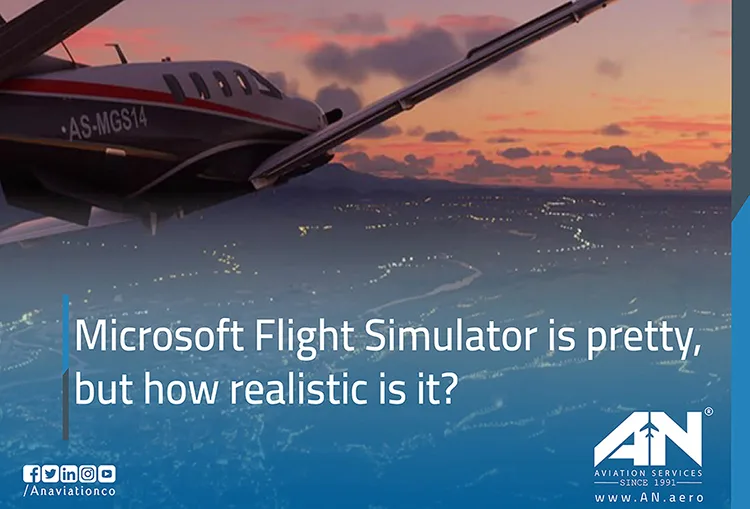
When Microsoft released Microsoft Flight Simulator 2020, it took the aviation and gaming world by storm. With its breathtakingly realistic graphics, real-time weather integration, and immersive environments, it quickly became one of the most popular video games for aviation enthusiasts and gamers alike. As we look forward to Microsoft Flight Simulator 2024, the question remains: how realistic is this stunning flight simulator, and can it genuinely replicate the real-world experience of flying an aircraft?
Let’s explore the realism of Microsoft Flight Simulator from the perspectives of graphics, physics, and pilot training. We’ll also discuss how it measures up for both beginners and seasoned aviation enthusiasts.
The Visual Realism of Microsoft Flight Simulator
One of the standout features of Microsoft Flight Simulator 2020 is its jaw-dropping visual accuracy. Using satellite imagery and AI from Bing Maps, the game recreates the entire real-world terrain, including over 37,000 airports, cities, mountains, and rivers. Flying over landmarks like the Eiffel Tower or the Grand Canyon feels incredibly lifelike, giving users an immersive experience unmatched by earlier versions of flight sims.
Additionally, real-time weather integration allows players to experience the same weather conditions as in the real world. Whether it’s thunderstorms, sunny skies, or snow, the environment reacts dynamically, creating challenges that are almost identical to those pilots face in real life. Even the lighting and sky textures change based on the time of day, ensuring a stunningly realistic flight environment.
Physics and Flight Mechanics: Does It Feel Real?
While the graphics are a clear standout, the true test of any flight simulator lies in its physics engine and how well it replicates actual flight mechanics. Microsoft has made significant improvements with Microsoft Flight Simulator 2020, ensuring aircraft behave according to real-world aerodynamics. The simulator accounts for factors like flight rules, weather, and terrain, as well as the impact of air density and altitude on performance.
For pilots and aviation enthusiasts, this attention to detail is critical. The handling of the aircraft, the responsiveness of the controls, and the effect of turbulence or wind shear all feel authentic. In fact, some commercial pilots have praised the simulator for accurately representing the dynamics of different planes, from small Cessnas to massive airliners.
However, it’s worth noting that, as realistic as it feels, Microsoft Flight Simulator is still a video game at its core. While it provides an excellent simulation, it lacks the tactile feedback of actual flight controls and some advanced functionalities found in certified training simulators.
Pilot Training: Can You Learn Real Pilot Skills?
One of the most frequently asked questions about Microsoft Flight Simulator is whether it can be used to develop pilot skills. The answer is both yes and no. For aspiring pilots, it’s an excellent tool for learning basic concepts like takeoff, landing, navigation, and understanding flight rules. The simulator allows users to practice communication with real-time air traffic control, helping them familiarize themselves with aviation terminology.
For those training to become licensed pilots, it can complement formal education by offering a safe environment to practice and refine techniques. However, it’s important to understand that Microsoft Flight Simulator is not FAA-certified, so it cannot replace formal flight training or count toward flight hours.
Accessibility: A Game for Everyone
One of the reasons Microsoft Flight Simulator has gained such a large following is its accessibility. Available on PC and the Xbox Series, it caters to both casual gamers and aviation enthusiasts. Its compatibility with peripherals like joysticks and yokes makes the flying experience more engaging and realistic.
With the Game Pass, players can explore the skies without the hefty price tag of traditional simulators. Additionally, the intuitive tutorials in the simulator make it easy for beginners to grasp the basics, while advanced settings challenge even the most experienced users.
Microsoft Flight Simulator 2024: What’s Next?
The upcoming Microsoft Flight Simulator 2024 promises to take the realism a step further. With more real-time features, expanded aircraft options, and even more refined physics, it aims to blur the line between simulation and reality. From advanced weather effects to missions that test specific pilot skills, it’s set to be the most ambitious flight simulator yet.
Comparing Microsoft Flight Simulator to Professional Simulators
When it comes to professional-grade simulators used by airlines, Microsoft Flight Simulator cannot entirely compete. Professional simulators are built to provide 1:1 realism with full-motion capabilities, tactile controls, and the ability to replicate emergencies. However, for the cost of a consumer-grade video game, Microsoft Flight Simulator offers an incredibly detailed experience that is unparalleled in its category.
Is It Realistic Enough?
So, is Microsoft Flight Simulator realistic? The short answer is: yes, to an extent. While it doesn’t replace actual flying or FAA-approved simulators, it does an impressive job of replicating the real-world flying experience for entertainment and light training purposes. Whether you’re a seasoned pilot or a curious beginner, the simulator offers a captivating glimpse into the world of aviation.
Why Is Microsoft Flight Simulator Important for Aviation Enthusiasts?
Beyond the stunning graphics and accurate flight mechanics, Microsoft Flight Simulator serves as an entry point for people interested in aviation. It inspires a new generation of aviation enthusiasts, encourages learning about flight rules and navigation, and even builds confidence for those considering a career in aviation. For current pilots, it offers a chance to stay connected to flying during downtime, reinforcing skills and exploring new scenarios.
Conclusion
Microsoft Flight Simulator isn’t just a game; it’s a celebration of aviation. It combines cutting-edge graphics, realistic physics, and accessibility, making it an essential tool for anyone fascinated by flying. While it can’t replace professional training or the hands-on experience of flying a real plane, it offers an unmatched way to explore the skies from the comfort of home.
As we eagerly await Microsoft Flight Simulator 2024, the future of flight sims looks brighter than ever. Whether you’re using it to develop pilot skills, explore the real world, or simply enjoy the beauty of aviation, this simulator remains one of the most remarkable achievements in the gaming and aviation industries.

